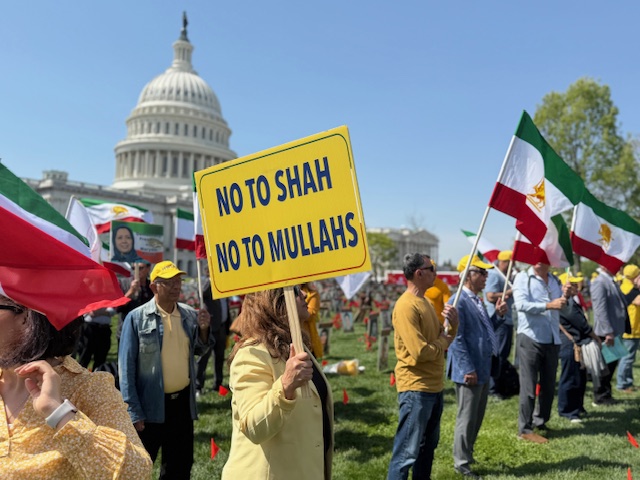With a fragile ceasefire now holding between Iran and Israel following the June 2025 escalation, headlines have temporarily shifted away from the regional tension. Yet the most consequential struggle involving the Islamic Republic is not in the skies over the Middle East but in the streets of Iran itself and the Iranian people’s fight for liberty.
Since August 2024, Iran’s regime has executed more than 1,350 people-many of them women, youths, and ethnic minorities, according to Amnesty International.
Repression is not a glitch in the system; it is the system. The regime has arrested more than 700 people since the ceasefire. It has established special courts to expedite the trials, and it relocates political prisoners to unknown locations. These signs are stark reminder of what took place in Iran just before the 1988 massacre of political prisoners.
For 45 years, Tehran has ruled through executions, torture, censorship and assassinations. The Islamic Revolutionary Guard Corps (IRGC) — the regime’s praetorian guard– exports that violence through proxies in Lebanon, Iraq, Syria and Yemen. Given this record, the refusal of some Western governments — particularly the European Union — to designate the IRGC as a terrorist entity is indefensible.
A return to monarchy is dangerous fantasy
Even now, with Tehran facing mounting domestic and international pressure, some pundits propose a return to monarchy through the son of the deposed Shah, Reza Pahlavi. This is a dangerous fantasy, reminiscent of Iraq-style regime change imposed from abroad. Iranians have already rendered their verdict on both monarchy and theocracy.
During the 2022 uprising, protesters chanted, “Down with the oppressor–be it Shah or Supreme Leader.” More than 3,600 resistance units, many inspired by a six-decade struggle against two dictatorships, have carried out civil-disobedience actions in nearly every province. Their aim is not to swap one autocracy for another, but to build a democratic, secular and non-nuclear republic, rooted in pluralism and equal rights.
That vision is embodied in the ten-point plan of Maryam Rajavi, president-elect of the National Council of Resistance of Iran (NCRI) a longstanding, broad-based coalition that functions as a parliament-in-exile for a future free and democratic Iranian republic.
Group’s platform calls for Western-style democracy
The group’s platform calls for free elections, gender equality, judicial independence, separation of religion and state and a foreign policy based on peaceful coexistence. It has enjoyed consistent backing from a bipartisan majority of the U.S. House over the past decade, including in both the 118th and 119th Congresses, as well as support from thousands of parliamentarians and dozens of former heads of state worldwide.
The latest congressional resolution indicates that in November 2024, Rajavi presented a detailed democratic roadmap to the European Parliament, grounded in the demands of Iran’s protesters and charting a peaceful transfer of power.
Some critics raise familiar objections, but they do not withstand scrutiny.
They argue that regime change from within is inherently messy. That’s true, but the current order is far bloodier and more dangerous. The Islamic Republic has crushed every peaceful reform effort and turned every grievance into an excuse for violence. There is no viable path to gradual liberalization. The question is no longer whether change is risky; it is whether the regime can sustain itself without continued repression, corruption and nuclear blackmail.
The answer is clear: it cannot.
Another objection insists that the regime is too deeply entrenched to fall. Yet the last five years tell a different story. Several nationwide uprisings, driven largely by women and youth, have shaken the theocracy’s foundations.
Economic collapse, internal factionalism, growing international pressure and public disillusionment have left the clerical state extremely brittle. What has been missing is not domestic pressure but international clarity on the path forward, including recognition of the Iranian people’s right to determine their own future.
Finally, with the growing question of what can come after this regime, some claim that Maryam Rajavi lacks grassroots support. The regime’s own behavior tells a different story. Tehran reserves its harshest sentences, public executions and mass-arrest sweeps for her supporters, who constitute the single largest bloc of political detainees in Iran, according to UN Special Rapporteur reports.
Growing opposition to theocratic police state
Because scientific polling is impossible under a police state, the best proxy for popularity is the risk people are willing to take. Rajavi’s resistance units operate clandestinely across nearly every province, despite torture and death sentences for even minor acts of affiliation.
Outside Iran, where repression cannot muzzle them, her backers stage the largest, recurring opposition rallies of Iranians in the world, drawing thousands month after month in Paris, Berlin, London, Washington, Toronto and beyond. These are sustained, volunteer-driven demonstrations that swell whenever the regime tightens its grip at home. By any realistic measure, sacrifice inside Iran and mobilization abroad, Rajavi leads the only opposition with both the organizational depth and popular reach to challenge the Islamic Republic as a viable alternative.
Both Democratic and Republican administrations have attempted appeasement of the Tehran regime. It did not halt Tehran’s dash toward nuclear weapons, stop its missiles from striking Israeli cities or deter the public hangings of political prisoners.
If the international community seeks lasting stability, it must back the Iranian people, not the theocracy and not discredited figures like Reza Pahlavi.
Bipartisan support for democratic alternative
U.S. House Resolution 166, now enjoying wide bipartisan support, does exactly that. It affirms the Iranian people’s right to resist and endorses a democratic alternative to clerical rule. It also calls for protecting former political prisoners and dissidents, including the residents of Ashraf 3 in Albania, many of whom are eyewitnesses to the regime’s past crimes.
These individuals remain constant targets of Tehran’s operatives. The Iranian regime has attempted cyberattacks, plotted terrorist bombings and launched a sustained disinformation campaign to delegitimize and threaten Ashraf 3, underscoring how seriously it fears organized resistance. Safeguarding Ashraf 3 is not only a matter of refugee protection. It is a test of the international community’s resolve to stand against transnational repression.
What Iranians seek is simple and just: a free republic where religion does not dictate law; where women, men and minorities share equal rights; and where no child grows up under the shadow of the gallows. That future will not be delivered by missiles or monarchs. It will be forged, despite enormous odds, by the Iranian people themselves.







